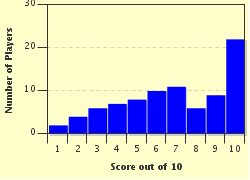Quiz Answer Key and Fun Facts
1. "See the child. He is pale and thin, he wears a thin and ragged linen shirt. He stokes the scullery fire....He watches, pale and unwashed. He can neither read nor write and in him broods already a taste for mindless violence. All history present in that visage, the child the father of the man." Such is the description of which character, our protagonist?
2. Near Nacogdoches, the kid encounters for the first time a most curious character. He is seven feet tall, with not a hair on his body. He steps into the canvas tent housing a religious revival to inform the faithful of the good Reverend Green's crimes: raping a young girl, and, if that were not bad enough, a goat. Yes, lady, that is what I said. Goat. A riot results. It later is discovered that this tall, bald individual had never heard of Reverend Green. Who is this man?
3. The kid joins first one outfit, lead by Captain White. They are soon massacred by a group of Indians near the Texas-Mexico border, and the kid is the only survivor. He wanders the desert until he is captured and thrown in the Chihuahua City jail. He is released on the condition he join the outfit of another group of Indian-killers, led by Glanton and the Judge. While Captain White was acting under his own authority, with no authorization by any government body, Glanton has been contracted by whom?
4. One evening during Glanton and his men's expedition in the desert, Tobin the expriest tells kid the story of how the judge came to join them. At one point when Glanton and his men were wandering in the wilderness, they encountered the judge, sitting on a rock without a canteen or any supplies. At the time, Glanton and his men were totally out of one particular vital supply. Much to their amazement, the judge was able to manufacture this supply as he led them on a quest for the raw materials: bat guano, charcoal, sulfur, and human urine. What was this vital supply?
5. At one point, the kid is chosen by lot to finish off one man, Shelby, who had been shot in a recent encounter with the Indians. He was too badly wounded to be able to ride with the group, but not wounded badly enough to be killed outright. Three other men appointed to kill off the three other men in Shelby's position do their duty with no hesitation. What does the kid do?
6. When the life of wandering thugs ceases to suit Glanton, he settles down in one place by taking command of a ferry (by now, we know what that means). "Soon they were operating a sort of procrustean ferry where the fares were tailored to accommodate the purses of the travelers." Finally, they drop the pretense entirely and simply rob and beat up the travelers. Does the "wicked day of destiny" ever come to John Joel Glanton?
7. No Western is complete without a showdown. In "Blood Meridian," the showdown is between the kid (joined by Tobin the expriest) and the judge (joined by the fool and two horses). Who gets shot and dies?
8. Years later, the kid, now a man, and the judge meet at a bar on the North Texas plains. The man is as silent as ever, and the judge is as eloquent and philosophical as ever. They drink. They watch the shooting of a large dancing bear. The judge, in a spectacular extended metaphor, compares the art of war to what?
9. What happens to the kid at the end of the novel?
10. The epilogue describes the act that put an end to the wild and untamed West: "In the dawn there is a man progressing over the plain by means of holes which he is making in the ground. He uses an implement with two handles and he chucks it into the hole and then enkindles the stone in the hole with his steel hole by hole striking the fire out of the rock which God has put there." What is this man doing?
Source: Author
pu2-ke-qi-ri
This quiz was reviewed by FunTrivia editor
agony before going online.
Any errors found in FunTrivia content are routinely corrected through our feedback system.

